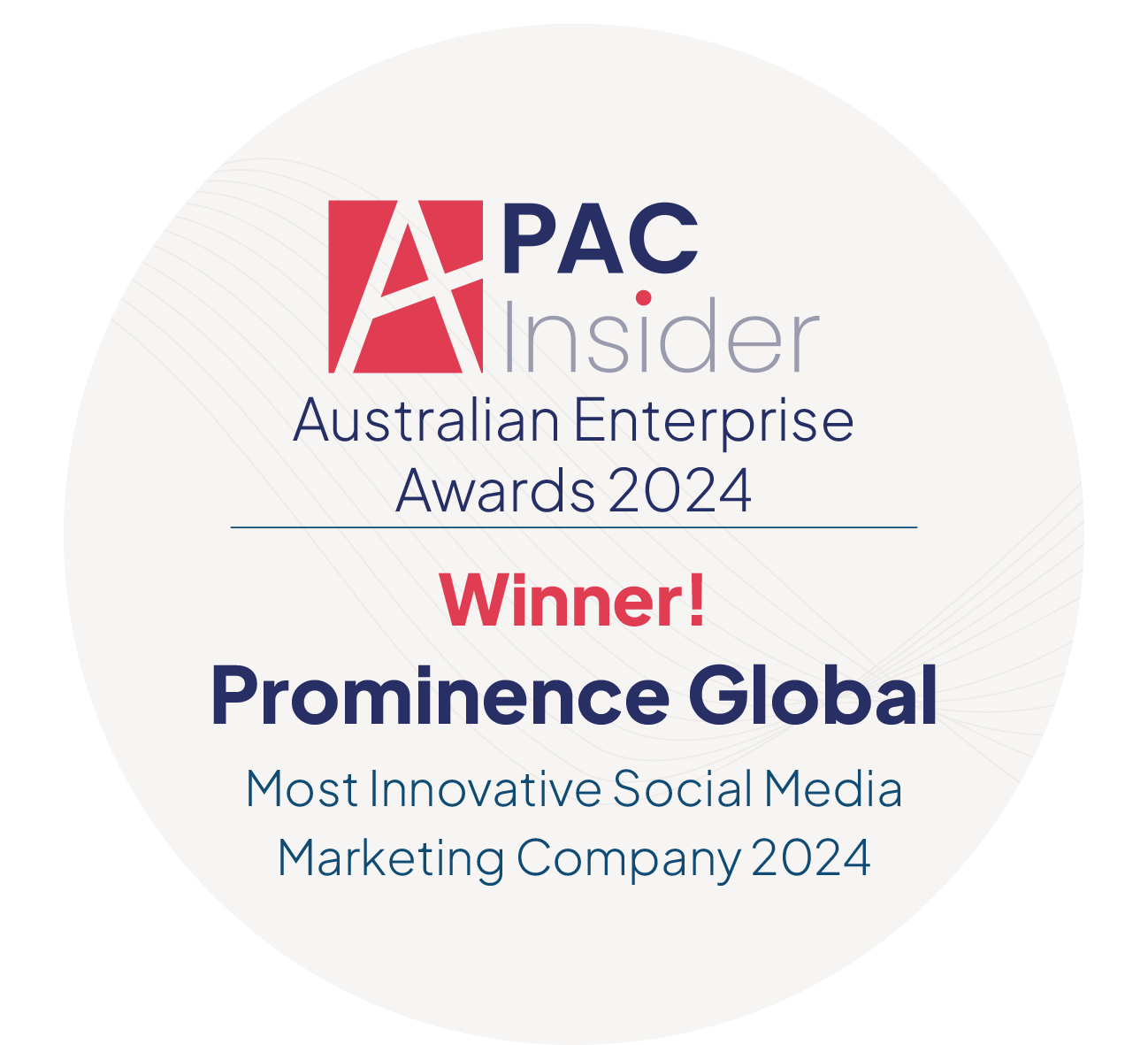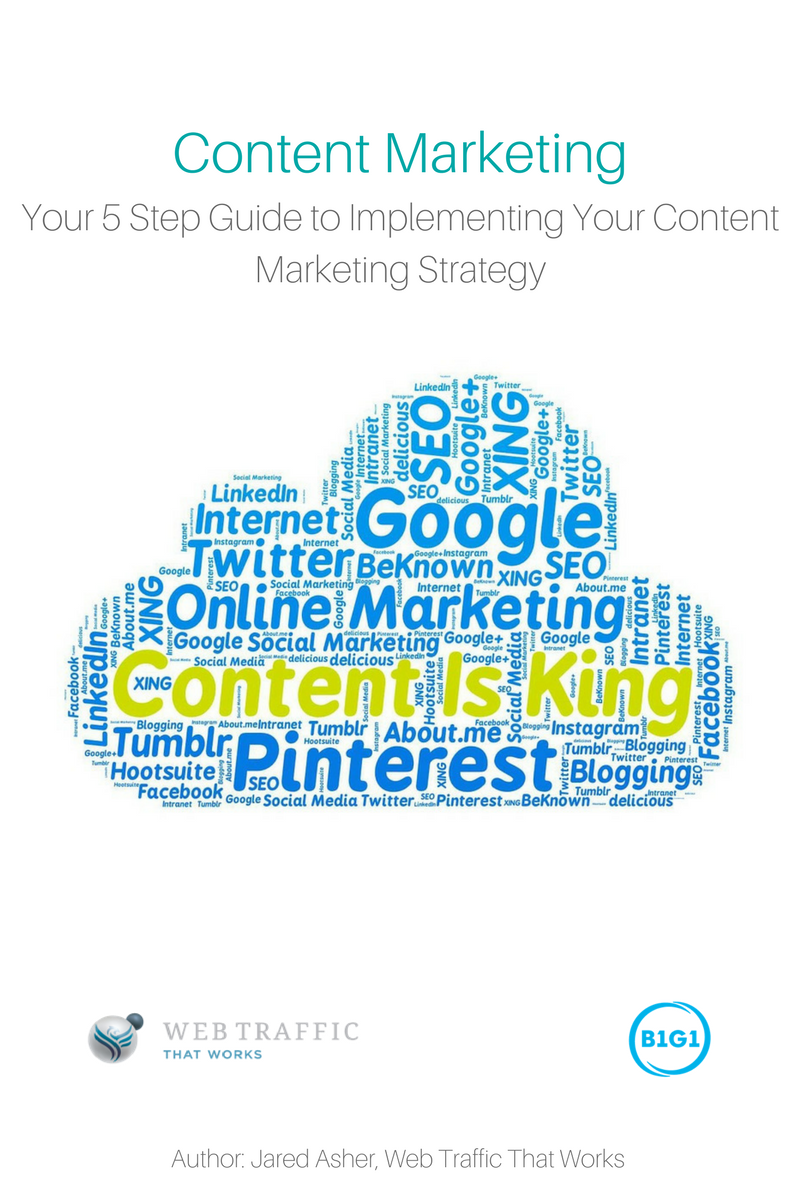It’s now 2017 and life online has officially gone crazy!
It’s like everywhere we look online almost anything and everything is being shared.
Businesses are no exception.
They too are exploding with content to engage their audiences. From corporate brand identities such as Nike, Virgin, McDonald’s all the way down to the start-up solo-preneurs.
We see videos, giveaways, memes, tools, templates, e-books, and webinars. You name it…
Information has gone viral.
Despite this online information overload, Content Marketing is still the number one marketing activity that produces results.
We all know about the benefits of content marketing such as audience engagement, brand awareness, lead generation, increased ROI, inbound links etc but the question is…
How exactly do we set up a content marketing strategy that produces these results?
The truth is most of us know why we need to educate our audience but few of us know what to do or how to do it. So we’ve decided to share our 5-step content marketing process with you so you can achieve the same in your business.
Step 1
Create an Editorial Calendar
Create an excel doc or table that plans out the next 3, 6 and/or 12 months of marketing activity for your business or client.
- Firstly, include seasonal events such as Christmas, bank holidays, the start of summer, etc.
- Research your client’s industry. What important events are taking place that you should know about? Major conferences? Report release dates? Government rulings? Special awareness days?
- Confer with your client. Get as much information from them as possible with regards to important business days, company milestones in the upcoming year, product launch dates, scheduled sales, new service offerings, and any of their own marketing plans. Sometimes the client will think certain bits of information are irrelevant, when they could actually be something to centre a piece of content around, so make sure to press them for all possible angles.
From this information, try to extract themes or campaign ideas. Check with the client to see if there’s something in particular they want to focus on, e.g. push their new kiteboard range in August.
These themes or campaign ideas will help inform the plans for your social, digital PR, blogging and overall content marketing pieces, so that you can create an integrated digital strategy. Indeed, it’s a good idea to populate the rows beneath all the monthly information with your plans for each individual channel, for maximum integration.
Make sure to stay in constant contact with your client (which you should be doing anyway!), so they can let you know about any new developments that can be added to your editorial plan.
Remember that this editorial calendar is not set in stone. It is simply a skeleton that will form the basis for your marketing campaign. Not all the dates, events or other items of information will be used. There is also plenty of room for reactive, ad-hoc campaigns, against the backdrop of what has already been planned.
Once you have completed the calendar, send to the client for any additional feedback or comments. When all the information is nicely organised, it may make it easier for them to understand and contribute additional useful information.
Step 2
Brainstorming
This is where the real hard work happens.
Gather your team around – preferably with representatives from each of the digital channels you will be utilising for the client, as well as your creative geniuses.
From the information that you have gathered, you’ll need to create campaign ideas that can be used for a content marketing piece, and will integrate with the other channels.
Things to consider:
- What resources are at your disposal? Do you have a designer who can create an amazing infographic for you? Is there someone at the company who can produce video content? Does your client have a whole load of data that can be repurposed? Don’t get disheartened if you have a niche industry or small client – it’s still possible to implement a content-driven campaign.
- What kind of content marketing campaign do you want to run? User-generated, where you create the idea and customers come up with their images or vines? Or do you want to provide an informative infographic or entertaining presentation?
- How long do you want the campaign to run? One week or three months? This ties in closely with the above point.
- While an epic content marketing piece that goes viral is always something to aspire to, make sure you are targeting your core audience, and not simply trying to replicate Buzzfeed for some feel good traffic and likes. At the end of the day, you want your brand name in front of the people who are most likely to convert.
- Don’t put all your campaigns in one basket. Sometimes a piece of content will bomb, for no good reason. Make sure you have a few campaigns planned, instead of pinning all your hopes, budget and resources on an idea that might not work.
Once the campaigns have been formulated, it’s time to get down to the nitty gritty.
- How will your content marketing piece be marketed across the different digital channels? Will you send a press release with your data-based infographic to relevant industry titles? Is there a budget for socially boosted posts? Is spreading your fantastic content piece via email an option? Plan out the promotional steps carefully. What marketing platforms will you use? There’s no point spending time, money and effort into producing a wonderful content campaign, only for it to fail due to shoddy promotion.
- What will need to be signed off, and by when? Budget? Final approval?
- How will you measure success? Increased traffic? Social shares? Increased brand awareness, which is a lot harder to establish? You want to put targets and measurements in place, so that you can improve for next time.
Step 3
Creation
There’s not much to say here, apart from the fact that this is where you put together all your planning and create the desired content marketing piece – video, report, graphic, written post, quiz, etc.
If you’re going to be running a user-generated campaign, then make sure you’ve got all the T&C’s sorted out, your PR list organised, and your social posts written out.
Be aware that in the creation of your campaign, you may find you need to deviate from your original plan. This is all part of the process, so remember to improvise if you reach a stumbling block. Agility is paramount in the world of digital – keep tweaking and adapting for the best campaign possible.
Step 4
Implementation & Promotion
The proof is in the pudding, so to speak – now it’s time to get your content marketing piece out into the world wide webosphere.
As with the creation stage, you may encounter obstacles that require you to adjust your well thought out plan. Don’t let this derail you.
Monitor your campaign, and make adjustments where needed:
- Is traffic from social performing poorly? Check that you’re making use of the correct hashtags. You can also boost your post for a small amount, and see if this improves.
- Is there a high bounce rate on the page where your piece is hosted? Take a look, and see what might be discouraging visitors. It might be as simple as a layout adjustment to fix it.
- Are visitors not participating in your campaign? You may need to write a stronger call to action, or offer a greater incentive.
Once the campaign has been “completed”, so to speak, it’s time to measure results, according to the metrics you decided on in the planning phase. Bear in mind that the best content is evergreen – so you should continue to monitor the success of your piece, long after it has gone live. You may find it continues to generate further traffic over time.
_________________________________________________________________________________________
Looking for more clients or customers? Join our contest for free and you could win a free Digital Marketing Campaign worth $10,000. Click here for more info: I want to win!
_________________________________________________________________________________________
ABOUT THE AUTHOR
Jared Asher
Jared Asher is the Head Marketing Strategist and General Manager for Web Traffic That Works.
Jared’s business career began in 2001 when he left school to become a Dj at the age of 17.
Coupled with studies in small business management and marketing, Jared quickly learned business and PR skills which played a big role in his music career, and lead him to achieve a international status, headlining clubs and festivals with some of the most prestigious global DJ’s and Producers in countries such as Australia, New Zealand and United Kingdom – within a period of 5 years.
Since then, Jared has been working with small business owners and expert practitioners with building online brands.
To date, Jared has consulted and mentored a total of 352 small-business owners, expert practitioners, and musicians.
In one recent project, ‘Ezy VA – The Worlds Smartest Outsourcing Solution’, Jared helped scale the company globally, earning a 7-figure plus annual revenue, operating in over 28 countries, and building a team of 212 permanent staff & managers – within a period of 18 months.











